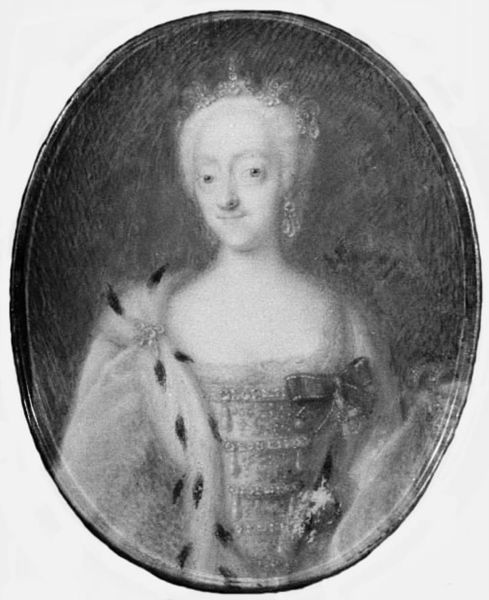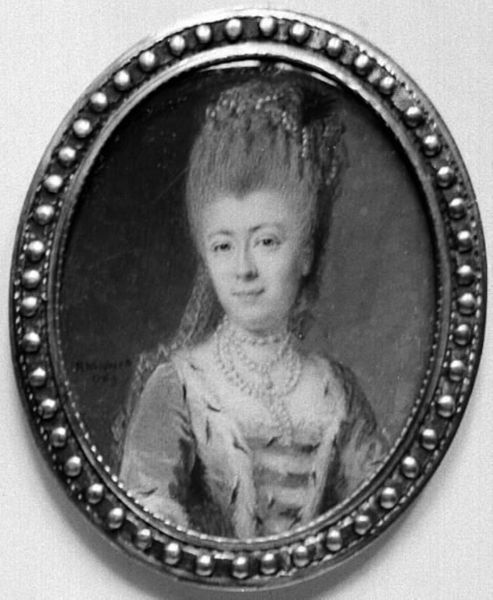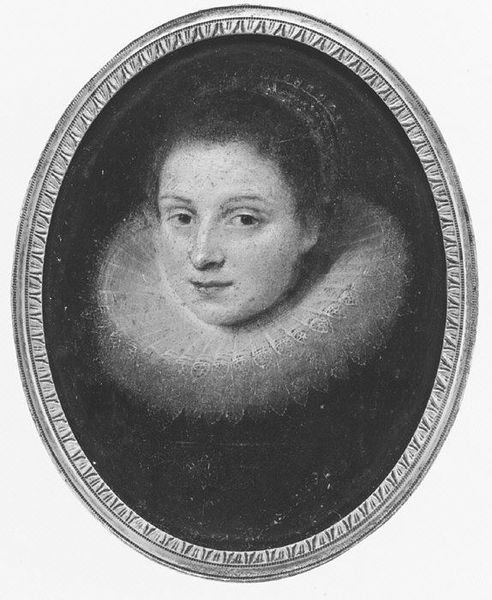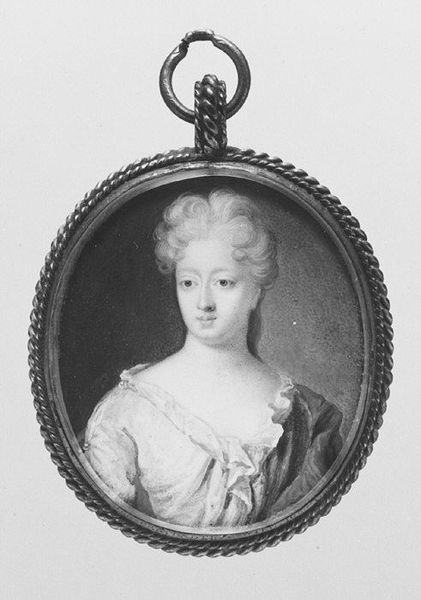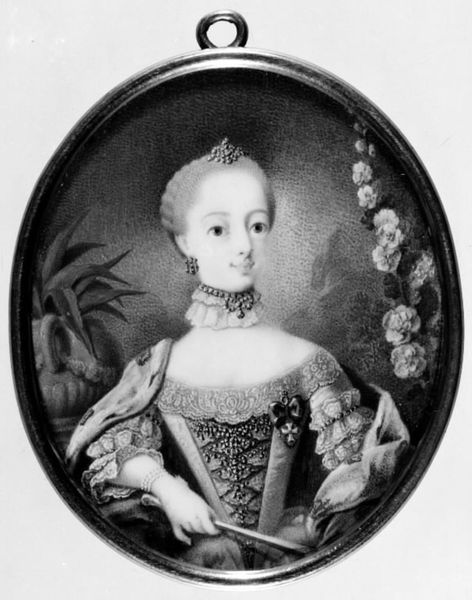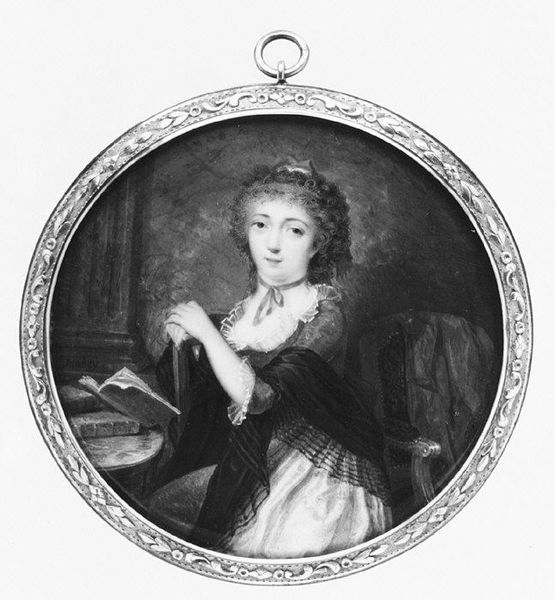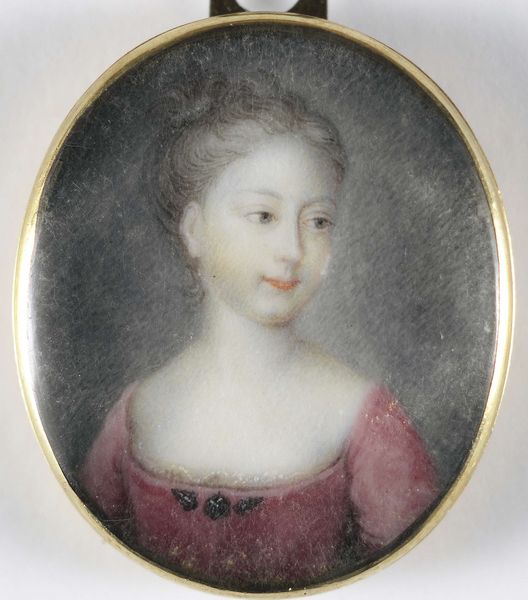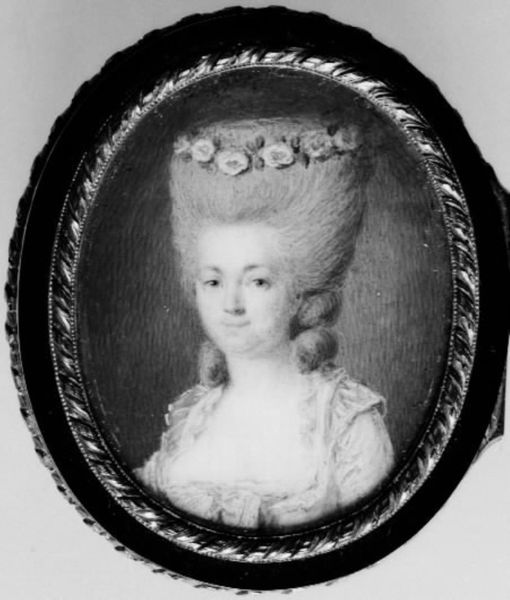
Dimensions: 1.8 cm (height) x 1.6 cm (width) (Netto)
This tiny portrait of an unknown lady was created by W.A. Müller sometime between the mid-18th and early 19th century. The miniature’s size suggests that it was intended to be worn as jewelry, perhaps as a locket. In the late 1700s, the courts of Europe became infatuated with portrait miniatures such as this one. What purposes did these images serve? How did this trend affect art institutions? The European aristocracy enjoyed an unprecedented level of wealth, and portrait miniatures became the perfect status symbol for a variety of reasons. Their small size meant that they were portable and could be worn, collected, or given as diplomatic gifts. Demand for miniatures soared. Artists found new opportunities for patronage outside of the traditional institutions of the church or royal court. The historian can research this era by tracing the networks of patronage that sustained artists like Müller. How were these images displayed, exchanged, and interpreted?
Comments
No comments
Be the first to comment and join the conversation on the ultimate creative platform.
